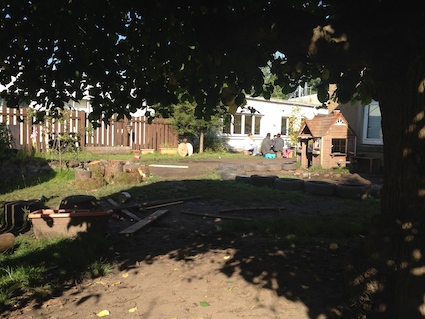
Several years ago, I spent a day at Dunblane Nature Kindergarten. It was an opportunity to share thinking and enjoy celebrating the journey of this childcare setting that values nature pedagogy and all that this encompasses. This blog post captures a process of change that remains relevant to Early Learning and Childcare settings – how to integrate nature, more time spent outside and a better sustainable approach.

In the words of author and education consultant Niki Buchan, “Dunblane Nature Kindergarten epitomises my definition of a true Nature Kindergarten with the following four points:
- The indoor environment is a beautiful, calm and uncluttered natural space with many open-ended opportunities.
- The naturalistic outdoor garden space offers children a large range of open-ended natural resources and opportunities to manipulate and use in so many ways.
- Children regularly access the local community and ‘wild’ natural spaces within their area for prolonged periods.
- There is genuine caring, consultative and respectful atmosphere between management, staff, parents and children.”
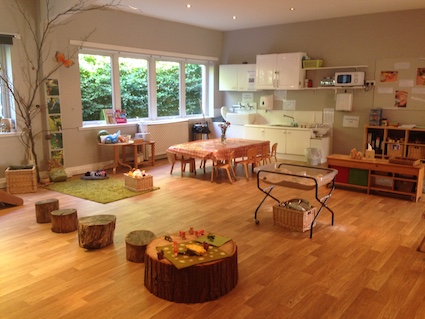
In the two years since Steven White took up post as project manager there have been significant changes to the childcare provision. What blew me away has been the enthusiasm of the staff about the changes. These are early years childcare professionals who have been on a transformative journey. They talked enthusiastically and at length about the process.
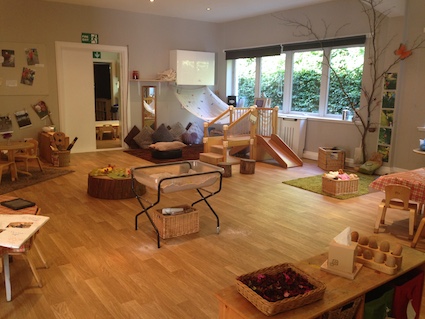
“The training opportunities have been tremendous. We have received training about fire making, tool handling, floor books and benefit-risk assessments. We went to other settings to co-deliver training with Steve White. We have visits to Cowgate Under 5’s Centre to share practice and learn from theirs. Team leaders have been given more responsibility. They have to make decisions when management are absent. There are now regular team meetings as a management team.”
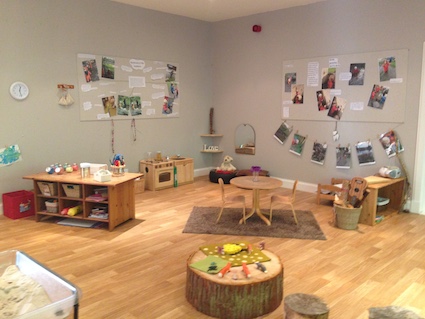
Planning is now completely child-led based upon observations of children to find their interests and further extend this. There are usually around 10 floor books running at any time on different themes such as eco activities, fire, all about me, the secret garden development and animals. The garden and water floor books are really popular at the moment.
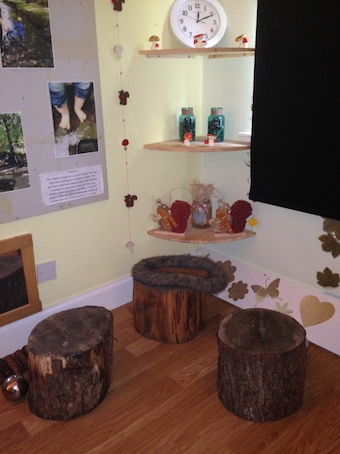
Every child has their own online journal – observations are added at least once per week. The staff are looking forward to developing this further through learning stories where children make their own book including the cover, title, etc.
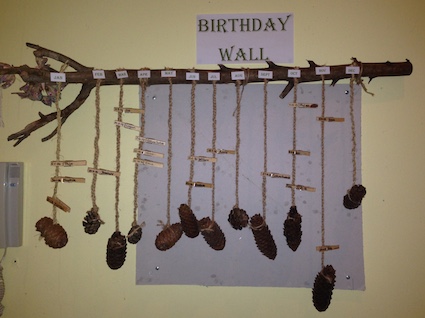
The physical appearance of both the indoor and outdoor spaces have been given a radical makeover. Children have been part of the process of developing the nursery inside and out and, according to the staff, have a lot more respect for the spaces and want to be involved in the ongoing changes.
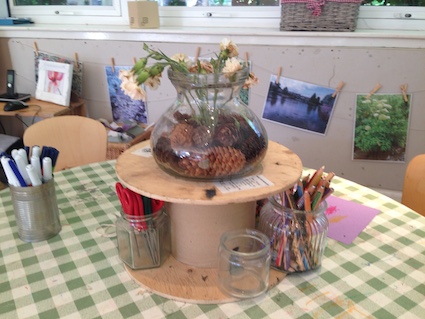
The rooms have been drastically de-cluttered. As a result the rooms feel spacious. Clear attention has been given to what is available at child height both in terms of resources offered. Information aimed at parents and adults is posted higher up on the walls.
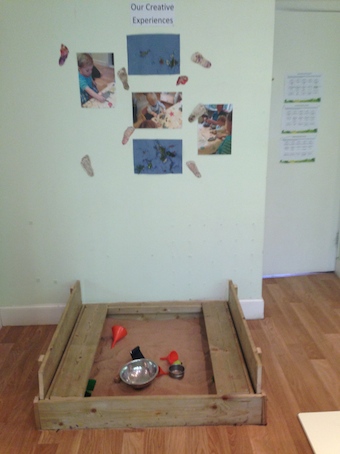
The décor has been replaced with neutral tones which have a calming effect. The physical layout enables children to transport items between different areas thereby making connections in their play-based learning. The resources reflect the nature finds from the daily visits out and about. They facilitate creative and imaginative play. Staff swap resources around between the rooms so children have opportunities to explore new resources and re-visit favourite ones. They are also free to move between the rooms as they wish.
Subtle changes have been made too. It is heartening to see the kitchen area as an open part of each room rather than being barricaded off. This means that children can be fully involved in snack preparation. The use of real cutlery, glass and crockery is the norm. Many of the kitchen resources are at child height on open shelves so that children can find and use them when preparing snack.
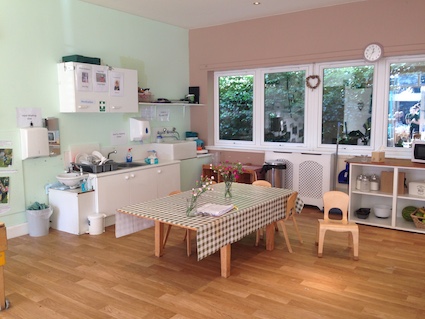
In terms of impact, the staff made the following comments, “It’s a lot calmer environment. There are less distractions. The children are more engaged with natural materials and their behaviour has improved. They have more opportunities for bonding and working together and so stronger friendships have developed between children.”
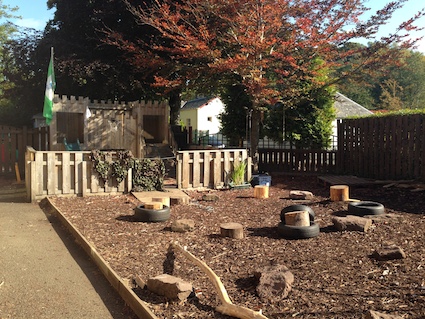
Staff now move around the rooms periodically. This enables them to work with all the different ages of children and learn experientially about child development and how to develop the curriculum appropriately. Furthermore the staff felt this helped them develop as a team and feel more confident about supporting each other.
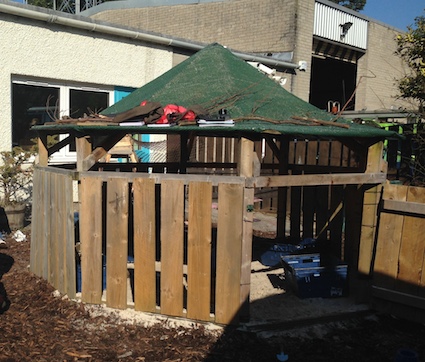
Outside, the concrete and wet pour surfaces have been removed along with the sterile static playground equipment. From the erosion of the grass, compacted mud and general wear and tear, it was evident that the children are choosing to spend most of their time outside.

The babies and toddlers I observed were completed used to having the freedom to freely walk, crawl or move around the outdoor space and were engaged and comfortable in doing this and playing with or alongside the older children.
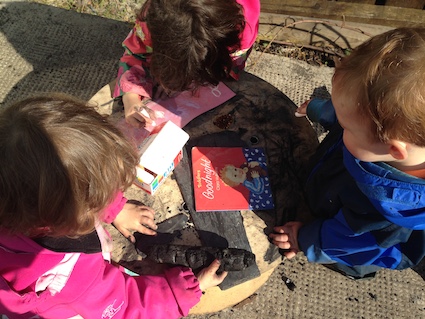
They all showed a high level of engagement and there was a calm purposeful feel to their play. Mud, water and sand play was popular but the children also enjoyed gathering informally in small groups to share books and socialise. Snack is often cooked and eaten at the fire pit.
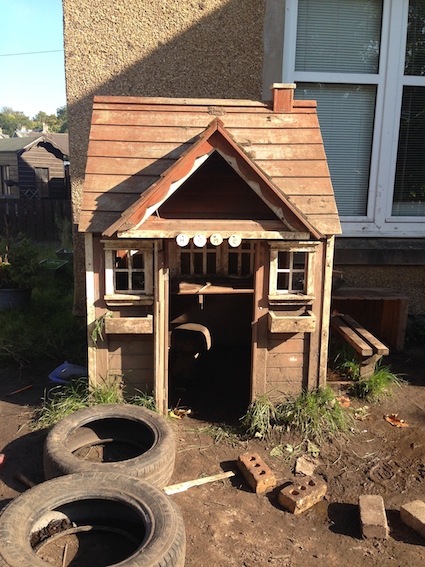
The interactions of the staff with the children were a pleasure to witness outside and in. They were all calm and gentle with the children. There were no raised voices and adults talking did not dominate – gentle laughter and encouragement was heard.

When I asked the staff about this, they told me, “We videoed each other to observe our interactions – being patient, pausing after a child has spoken, not interrupting and whether we get down to child-height when we interact. We have learned about how to get a good overview space in every classroom and in the outdoor space.”
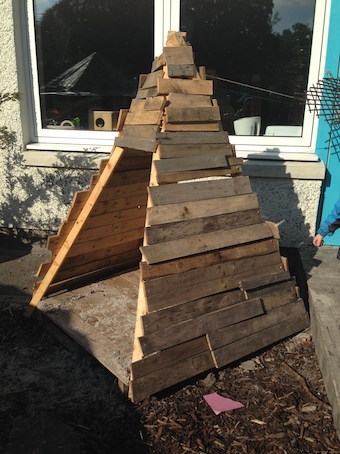
In the afternoon, the older children took the visitors and myself, off-site to visit a local stream. The staff and children have mapped out the local area and know lots of places to visit depending on the current interests of children and the seasonal opportunities which arise. The outdoor space at DNK is not particularly large. The children clearly valued off-site experiences and happily led the way.
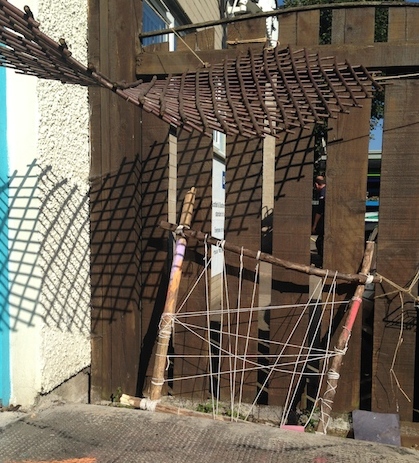
The staff feel their confidence about getting out and about with the children has grown. “The children have more freedom within the clear boundaries. There’s increased mutual respect. Children can run ahead. They can climb as high as they choose. Children are much more responsible and in charge of their own learning. It’s made our job easier.”
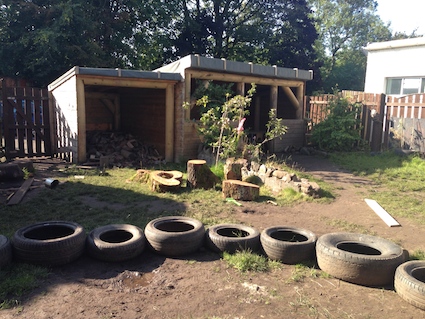
The staff at this nursery demonstrate that significant lasting changes are possible to make that do not involve hiring a new set of staff but rather give everyone the respect, responsibility and trust to make these changes. The sense of empowerment is strong. “Everyone has a sense of entitlement. It’s a big family. I can’t see any of us moving to another nursery.”
Below is a lovely video which shows Steven White demonstrating the approach he’s introduced.
This blog post was originally published in November 2015. Although Steven White no longer manages this nursery, his legacy continues. The company, Thrive Childcare, that runs Dunblane Nature Kindergarten, now has several nature kindergartens. Whilst I’ve no idea about the quality of provision in any of them, at the time of updating this blog, it is encouraging to see the concept of nature-based practice gaining validity.




















Love this, we open our new nursery building next year and I’m going to be taking lots of ideas 🙂
Julie
I came away inspired. The place felt loved by children and staff. It was a motivating place to visit.
Lovely to see this space, I had an Australian visitor last month, who had been part of that study tour & she raved about DNK. It also looks very like Cowgate & I can see Steven brought all his Auchlone experiences with him too. Thanks for sharing again, it allows me to glean ideas from the comfort of my sofa. I do worry though, that places who are striving to be different are in danger of becoming the same – do you know what I mean? That is what I loved about Highway Farm – so unique.
Hi Kierna
Thanks for your comment. I think what is nice in Scotland is that the growth of the outdoor nurseries have not been formulaic – each one truly sings its own song that reflects the children and community.
I think the interest in nature-based practice has grown out of the clear impact for the children in the setting. Many Australian EY settings are doing great things here.
I agree with your comments about Highway Farm… the level of creativity and originality is superb and borne out of the ethos that is child-led too.
Best wishes
Juliet